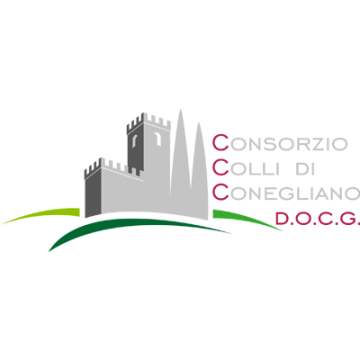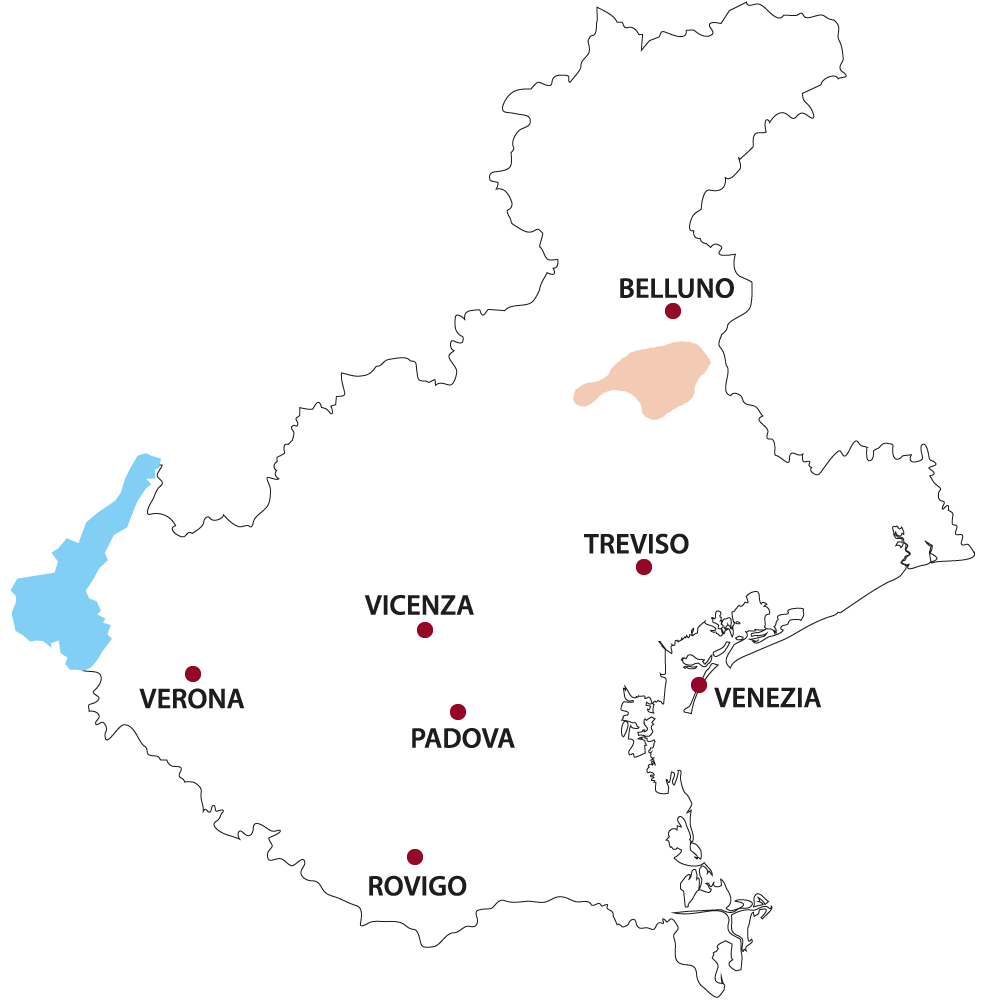

Zona di produzione
The Consortium for the protection of the Colli di Conegliano Denomination of Origin, though recently established in 1998, has solid roots in the great and ancient tradition of other wines from the hills of the Treviso area, in particular of the left side of the Piave river. The Colli di Conegliano Denomination production zone includes the hilly territories of the municipalities of Cappella Maggiore, Cison di Valmarino, Cappella Maggiore, Cison di Valmarino, Colle Umberto, Conegliano, Cordignano, Farra di Soligo, Fregona, Follina, Miane, Pieve di Soligo, Refrontolo, Revine Lago, San Fior, San Pietro di Feletto, San Vendemmiano, Sarmede, Susegana, Tarzo, Vidor, Vittorio Veneto. This area values a viticultural tradition from its renown past that has not only managed to defend some local productions while evolving with intelligence and ability, thus saving and promoting enological characteristics of absolute value, but has also been offered the opportunity to reward the now wellknown white wine, a masterpiece that was obtained in an experimental vineyard by the former Dean of the School of Viticulture and Oenology of Conegliano, Professor Luigi Manzoni
Caratteristiche e tipologie vino
The “Colli di Conegliano” Denomination of Origin wines arise from masterful blends of the most prestigious and best quality products cultivated on the hills around Conegliano. It is a question of genuine rarities produced in limited quantities; elite wines which constitute pride, and boast of the viticulture and oenology of the Treviso area. The “Colli di Conegliano” Bianco is obtained from the grapes of the Manzoni crossbreed (between Riesling Renano and Pinot Bianco) and Pinot Bianco and/or Chardonnay and it can also include, in minimum percentage, grapes from Sauvignon and Riesling Renano vines. This special blend does not allow the wines release for consumption before April of the year following the harvest. The “Colli di Conegliano” Rosso results from a blend of Cabernet Franc, Cabernet Sauvignon, Marzemino and Merlot (the latter may not exceed 40%) and possibly also Manzoni 2.15 and/o Refosco p. r. It is a wine with a distinctive character, released for consumption only after at least two years of aging - three years for Rosso Reserve - of which six months must be in wooden barrels (twelve months for Rosso Reserve) and three months in the bottle. Torchiato di Fregona is a cultural and environmental heritage tied to the land and culture of the town of Fregona, a natural environment that contributes to the creation of the diversity and unique nature of this wine. It is obtained from white grapes of Glera, Verdiso, and Boschera blended in the minimum proportions of 30%, 20% and 25% - an addition of up to 15% of white non-aromatic Treviso grapes is allowed - ; a blend that confers to the wine special organoleptic characteristics. Freshly harvested grapes are hung to wither from the rafters of attics or left lying inside dry premises, where they are exposed to the sun so that they do not moulder. The duration of the drying process may vary depending on the sugar density which one wishes to obtain. The pressing takes place in the week before Easter: the withered grapes are ginned, poured into a vat and squeezed with a “becanela” (a short wooden cylinder with two handles). The must is pressed and the residue is beaten, then pressed again many times. The liquid obtained is fermented in small barrels of oak or chestnut only partially filled so that the wine oxidises in contact with the air. On the 2nd of August the ritual of the tasting of the new Torchiato takes place; it is then racked in other barrels where it is kept to mature until Easter of the following year. The Refrontolo Passito is obtained from Marzemino and produced in a very limited area. The rules of production identify its origin in the municipalities of Refrontolo, Pieve di Soligo, and San Pietro di Feletto. The grapes harvested in October are laid on mats until the week of Christmas, to bring the wine to a minimum potential alcoholic strength of not less than 14 degrees; then it is vinified. The wine can be left to mature in small wooden casks and be decanted monthly until it gains clearness. The Refrontolo Passito cannot be placed on the market unless it has been aged in bottles for at least three months. The Refrontolo must be left in wooden barrels for at least twelve months with an aging of at least two years.
Grapes
-
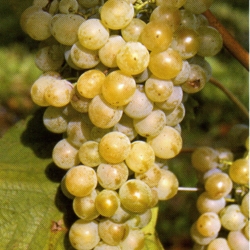
BOSCHERA
-
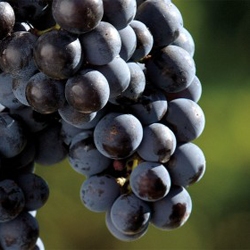
MARZEMINO REFRONTOLO
-
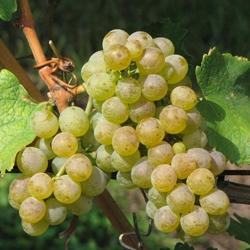
MANZONI BIANCO
Together with Manzoni Bianco, the most famous clone among those developed by Professor Luigi Manzoni in the 1930s, other autochthonous D.O.C.G. “Colli di Conegliano” wines are Marzemino and Boschera. The origins of Marzemino are lost in the mists of time, though it seems the eponymous vine spread with Roman settlers in Carinthia, and then from that area the cultivation extended into the Veneto regions. In the 15th century the Marzemino was known throughout the area of Padana and in the region of Friuli; in the Adige valley it was introduced by the militias of the Republic of Venice during the period of its greatest expansion. It was known by various local names: Marzemina, Bergemino, Berzemino, Barzemin, Marzemino. In the following centuries Marzemino reached the courts of Innsbruck and Vienna from the Vallagarina valley. Today many varieties of this vine have disappeared, especially due to strong attacks of “mildew”, and the best selections remaining are used as the base for sweet sparkling wine in the Treviso and Refrontolo areas, where the grapes are dried on mats until Christmas. Here it been cultivated for 700 years according to a sign at the entrance to the village of Refrontolo and, in the past, supplied the Doge of Venice, and Popes. Boschera, a vine cultivated for centuries in areas of high altitudes near woods, produces small quantities of grapes but, due to its acidity, helps give body to the Torchiato. The berries have a tough speckled rind, a fruity flavour, and a pronounced acidity. From 100 kilograms of grapes 20 litres of passito wine are produced. In all probability the farmers from Fregona chose a delayed vinification of withered grapes because of its acidity, which otherwise would have given a poor and easily perishable wine.
White Wines
COLLI DI CONEGLIANO D.O.C.G.
Colour: straw-like yellow
Bouquet: vinous, with a pleasant, aromatic and characteristic scent;
Taste: dry, pungent, elegant, velvety, Alcoholic Strength minimum total volume: 11%;
Accompaniments: hors doeuvre, first courses, white meats and fish: Special Notes: its special blend does not allow the release for consumption before the month of April of the year following the harvest.
COLLI DI CONEGLIANO TORCHIATO DI FREGONA D.O.C.G.
Colour: intense golden yellow
Bouquet: intense, characteristic, of acacia honey or lime tree;
Taste: from dry to sweet, rounded, full, persistent
Accompaniments: cakes and dry biscuits, blue and spicy cheeses;
Note particolari: it is also called Vin Santo.
Red Wines
COLLI DI CONEGLIANO ROSSO D.O.C.G.
Colour: ruby red tending to garnet;
Bouquet: vinous, characteristic, averagely herbaceous, pleasant, more intense if aged;
Taste: dry, pungent, full-bodied, well-balanced, correctly tannic
Accompaniments: wine for contemplation, ideal with red meats and game: Special Notes: it is released for consumption only after at least two years of aging, six months of which must be in wooden barrels and three months in bottle
COLLI DI CONEGLIANO REFRONTOLO PASSITO D.O.C.G.
Colour: intense ruby red;
Bouquet: vinous, pleasant, delicate, characteristic, with hints of wild blackberry and morello cherry;
Taste: sweetish or sometimes slightly sweet, velvety, bodied, well-balanced, pungent, sometimes lively,
Accompaniments: it is a wine for entertaining, ideal with desserts:
